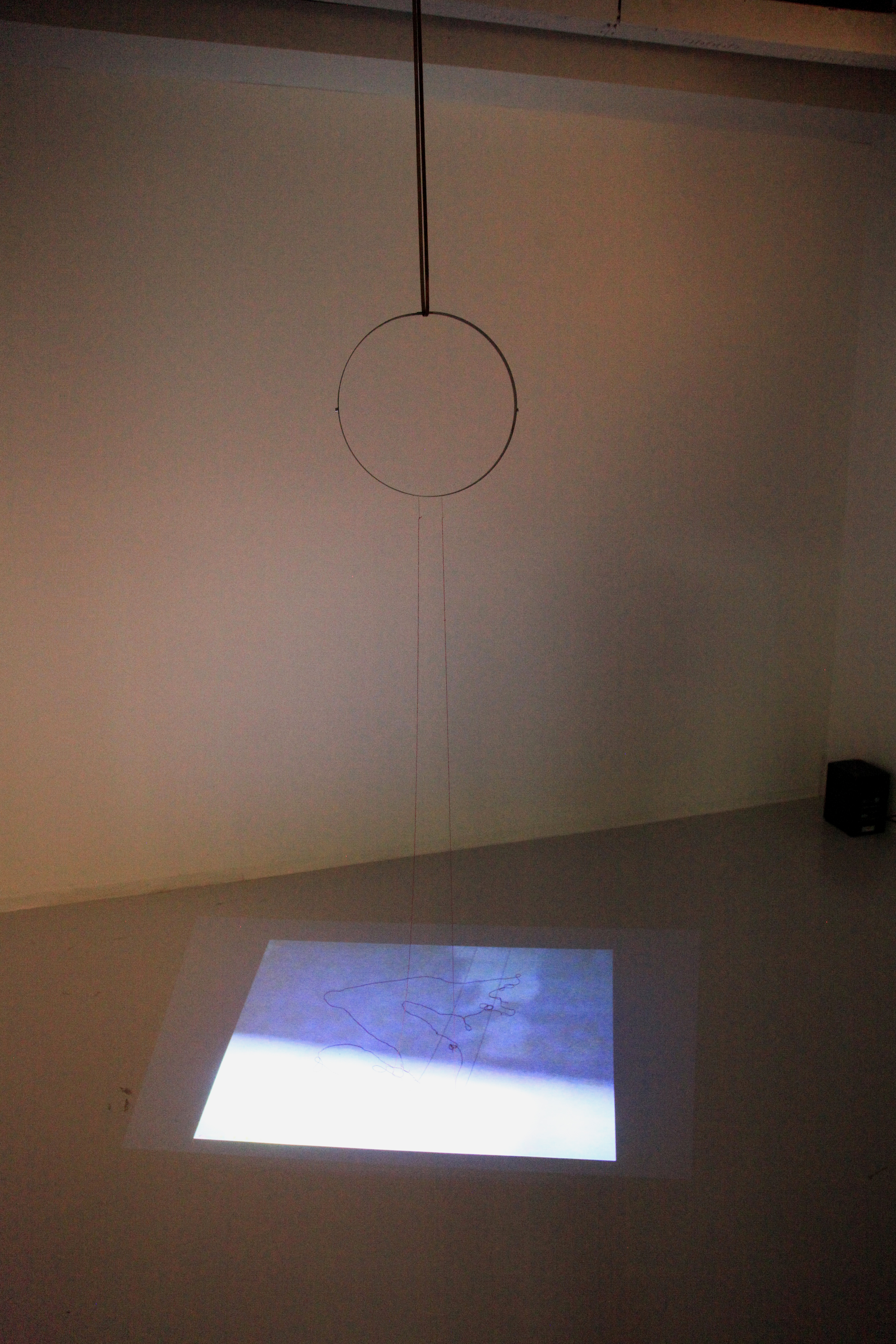Wavelike (en)Counter
Artists: Ivetta Sunyoung Kang & Eugene Park
2017, multiple sculptures and three-channel video installation, colour, audio, loop,
variable dimension and duration
Narration writings are written by the two artists and
voice recordings are by Kang’s, Park’s and Eric Dongho You.
“All magnets will always point north-south if freely suspended in the absence of other magnets. This is because they tend to align themselves with the earth’s magnetic field.”
(Russell, Colin Archibald. Michael Faraday: physics and faith. Oxford, Oxford University Press, 2000)
With this antique scientific discovery, the two artists, Eugene Park and Ivetta Sunyoung Kang, have extended it to be fundamental concepts that poetically depict human fate on relationship. It is a paradox of long-known human fate to fruitlessly seek to be united with another.
Wavelike (en) Counter is a multidisciplinary piece that consists of three sculptures and three-channel videos. Essentially, this work presents two phenomenological ideas: 1) relational distances that cannot totally be closed and 2) the fateful loneliness that a human inherits, which urges one to seek another human and societies. In the matter of these two disparate yet prerequisite aspects for one another, the artists see each component of the piece as a physical substance that emanates fields. Relational distances are created from the centre of origin, outward and in all directions; they embody a field, which is malleable, depending on phenomenological conditions. Similarly, when one object comes into the field, the magnetic force attracts it, and it is forced to stick to the magnet, changing its state as if they were originally a single entity. However, when it changes its spatial position to the outskirt of the field, the magnetic force is not able to influence the object. This precarious yet earnest energy that attracts its subject, which the magnetic force owns, is carried upon the ground of an audience’s empirical wandering within the artwork.
Eugene Park makes installation about this precarious relationship by animating and activating immanent power amongst materials. The needle and thread crossing the gallery space try to reach the magnet, yet the physical distance between the two constrains them to touch each other. The needle levitates in the air not by reaching the magnet but by hanging dangerously on the verge of magnetic power. As times go by, the magnet keeps affecting the needle without touching it, which makes the floating needle be magnetized. Park also put many iron poles on the floor which affect spectators’ walk in the space. When spectators are physically interrupted by the poles, they are physically connected the material in the space.
Ivetta Kang visually sculpts her private home and her lover in the video to transform them to be a perceptional receptacle through the playful approach created by turning the flash on and off. When the light turns either on or off, subtle particles of the private would reveal. However, they all actually belong to the same singular spatial-temporal world, standing on as a form of ‘home’. “Light is a wavelike magnetic force.” The singular container of time-space is aesthetically interchangeable with individual perceptual time-space. Ivetta looks at her home as one solid entity and, at the same time, as a fluid collectivity of layers of time and space that are meant to attract, magnetizing one another continuously.
While having each piece gathered together as a body of work, the two artists also imagine a series of non-linear love stories of two lovers. Each narration poetically seizes varied angles of human relationship. One of them written by Ivetta was inspired by a mythological greek figure; a shepherd who found magnet for the first time. The other one written by Eugene alludes the Mirror Stage of Jacques Lacan the period of which makes the intrinsic feeling to human such as Narcissism and vulnerability.
Ivetta and Eugene, 2017
Installation view at MFA gallery, Concordia, Montreal QC Canada







